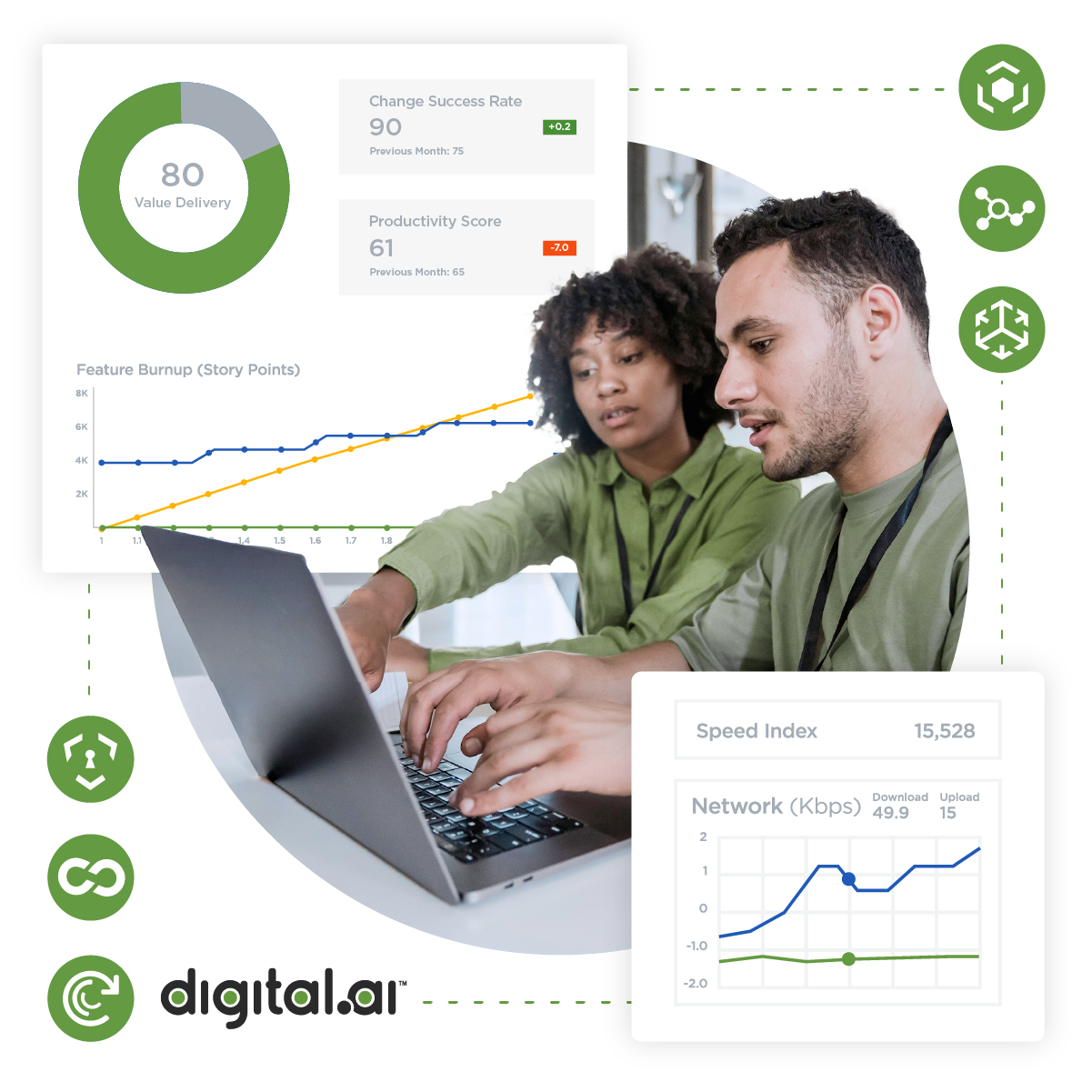Table of Contents
Related Blogs
Read this article to see how digital transformation must mean not just the adoption of digital technologies but actual transformation to obtain the promised gains.
Digital transformation trends in 2021 show a period marked by opportunity and optimism, but also awareness of what’s at stake. Organizations the world over have been pressured by the proverbial “burning platform” presented by COVID-19 disruptions, which have hastened the general consumer shift towards digital. At the same time, many organizations are now reaching the latter half of their digital transformation initiatives, but without the full range of expected results to show for it.
According to our Digital Transformation Progress Report, even though 95% of surveyed organizations say their digital transformation is going well, 91% report that they “need to get more”. Further, 49% said they aren’t seeing the expected results, and 54% have encountered issues that “hurt their bottom line”.
What many organizations are realizing in 2021 is that to obtain the promised gains, digital transformation must mean not just the adoption of digital technologies but actual transformation. They must be able to deliver more substantial value to customers through digital customer-facing experiences as well as digitized internal operations.
Enterprises — and the whole world — are amid a watershed revelation for what it truly means to be “digital”: completely overhauling the organization to take the most advantage of current capabilities to deliver meaningful service and product improvements.
After sprinting ahead mid-pandemic, some digital enterprises wish they could catch their breath
When COVID-19 risks forced business offices and locations to temporarily close, businesses were forced to rapidly begin moving company operations and customer services to digital platforms. 92% of leaders say they responded well to the pandemic, according to the Digital Transformation Progress Report survey, but 94% reported that the pandemic had an impact on their ability to keep IT and business value streams aligned.
In the report, it was noted that “survey responses show that while the majority of respondents feel positive about many aspects of their transformation initiatives, most organizations have a long way to go to fully align technologies with business, achieve desired outcomes, and see a meaningful ROI.”
As a further indicator of whiplash, 93% of survey participants said they are doing well at using business objectives to drive digital product/service development towards increased customer value, yet 57% of participants said that they’ve encountered misaligned goals across business, IT, and security. Similarly: 92% laud themselves for making smart tech investments, yet 56% say they’re concerned about ultimate ROI.
As yet another example, our State of Agile Report published earlier in the year shows that Agile adoptions leaped forward during the pandemic, more than doubling among software, IT, and operations while surging ahead in HR, marketing, sales, and finance. Yet, 46% of survey participants reported challenges with inconsistent practices and processes; 43% report that their organizational culture is at odds with agile values; and 42% say they’re experiencing a general resistance to agile changes across the organization.
One likely issue at hand is that digital transformation is a two-step dance: adoption of new technology must be accompanied by changes in work perspectives and culture, not just work processes. When both technology and culture are in rhythm, business leaders and employees alike can begin to work towards discovering how to meet their customers’ needs in new, exciting, and unanticipated ways
Transformation requires not just digital adoption but digital discovery
Digital transformation must be approached in an agile way, which means that the final state of the business will be unknown until at least the first few iterations are attempted.
The journey is well-depicted in a Harvard Business Review article that posits a four-tier evolution process of digital transformation.
Tiers 1 and 2 represent the use of digital technologies to make traditional business and customer-facing processes more convenient. Tiers 3 and 4 involve the actual transformation: leveraging digital technologies to pivot towards revised or wholly new business lines that can deliver unprecedented customer value.
Here are some examples:
- Moving to a paperless office to make record-keeping and retrieval more convenient.
- Providing online insurance customers with a convenient portal to check policy details and file a claim.
- GE uses jet engine sensor data to guide pilots in real-time to optimize fuel efficiency.
- Peloton uses customer data to match customers to trainers and other third-party services.
Organizations must develop the digital fluidity and fluency necessary to make these adaptations. Making the best use of digital technology involves leveraging its full capabilities. That includes the data created and not just the functions of the tools themselves
The key difference is that, after a true transformation, digital platforms aren’t just replacing existing job functions but facilitating novel ways to deliver customer value. As HBR puts it: “Products no longer just deliver functionality, help build a brand, or generate revenue; they now also serve as conduits for interactive data and wellsprings for new customer experiences.”
The Washington Technology Blog, which follows government agency and contract work, similarly observes that “in many ways, digital transformation is a mindset or way of thinking about problems and outcomes that are then enabled by technology.”
To illustrate what this means, consider the examples below:
Government service contractors
Per MIT Sloane:
- “Contract manufacturers are using data to determine what components work best together and what suppliers are most reliable to help their customers design better electronics products. Defense manufacturers leverage simulation to adjust designs, boosting quality and reducing the number of failed prototypes. And other companies can introduce new product-as-a-services offerings, having optimized operations through the use of data.”
FDA modernization
In a recent release, the FDA announced a pledge to use digital systems to not only speed up work efficiency but also provide better services and consumer protections through data.
In their own words:
- “The agency began these efforts because, as a science-based agency that manages massive amounts of data to generate important decisions and information for the public, innovation is at the heart of what we do. By prioritizing data and information stewardship throughout all of our operations, the American public is better assured of the safety of the nation’s food, drugs, medical devices, and other products that the FDA regulates in this complex world.”
Many enterprises are currently at a crossroads in their digital journey
Many organizations currently feeling “stuck” after making so many quick wins are more than likely frustrated by a lack of transformative vision necessary to make big leaps. Put simply: in 2021, the big digital transformation trends show that businesses are struggling less with the adoption of technology compared to figuring how to best use that technology to drive unprecedented levels of customer value.
Progress within digital transformation has been fast over the past year, but some organizations are feeling somewhat lost along the way. What they need is to take an introspective look at internal operations and how value flows from within daily tasks to become a tangible source of benefit to end customers. Frustrations and misalignment during digital transformation can only be solved by considering the end goal at hand and seeking that goal, sometimes by way of dramatic changes or entirely new forms of value creation.
Aim for quick wins to push transformation further towards end goals
The good news is that organizations can start small and work iteratively, in an agile fashion, to bring along digital transformation initiatives towards their full potential. There may be some organizational resistance, but this is natural given the sweeping changes that often get implemented.
To minimize pain and facilitate a smooth transition, Harvard Business Review suggests mapping how new digital technologies will impact specific tasks/job roles within a business line. Then, the business can target low-complexity use cases as a form of an agile pilot, setting the stage for “quick win” scenarios.
“Beyond financial considerations, quick wins also have an important psychological effect,” the article emphasizes. “Because digitalization projects are often marathons rather than sprints — requiring gradual changes to organizational structures and culture over time — successful pilot projects in the early stages serve as guiding and motivating lighthouses, enabling a lean approach to transformation management that can be adapted and improved.”
We would adamantly agree with this assessment, especially since the success of pilots in modeling agile transformation has been seen at our client’s organizations, including Levi Strauss & Co.
2021 digital transformation trends show a need to move beyond shallow improvements
Once new capabilities have been discovered, organizational leaders can consider the full potential of how their digital platform adoptions can transform their business. Doing so allows them to not just improve existing value streams but create entirely new ways of delivering value to customers. This commitment to transforming the business — not just its technology — can help organizations proceed past the midway hump in their initiatives and see a promising future at the end of the journey.
In 2021, many enterprises have already progressed to this point, but others have a further hike ahead. Until they can fully recognize the potential that digital platforms (in conjunction with technologies like business intelligence and predictive AI/ML) can bring to their customers, their investments will not be truly fulfilling. By being open to discovery and new capabilities, organizations can realize the full promise of digital transformation and what it means for their customers.
Are you ready to scale your enterprise?
Explore
What's New In The World of Digital.ai
Better Together: Unlocking Endless Possibilities For Our Customers
This Valentine’s Day, join us in celebrating the unique stories that make our Digital.ai customers special!
Optimizing Cloud Adoption: Improving Visibility and Accelerating Release Velocity in Complex Environments
Discover how to optimize cloud adoption in complex environments by improving visibility, accelerating releases, and maintaining governance.
Guide: Developing a Cloud Migration Strategy
Transform your business with a strategic cloud migration. Learn about the benefits, challenges, and best practices to ensure a successful move to the cloud.




